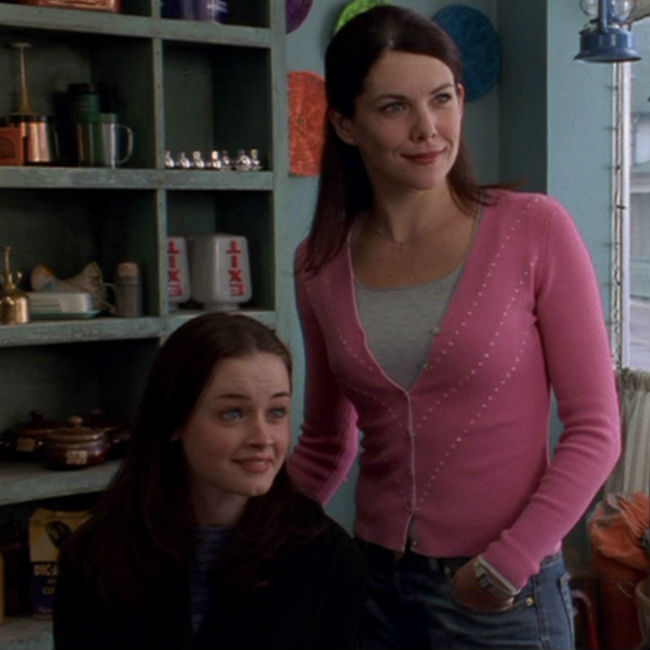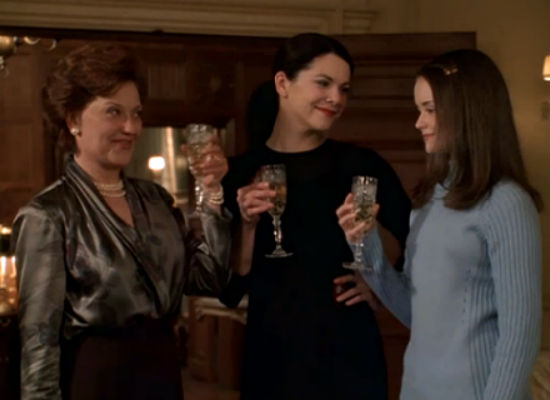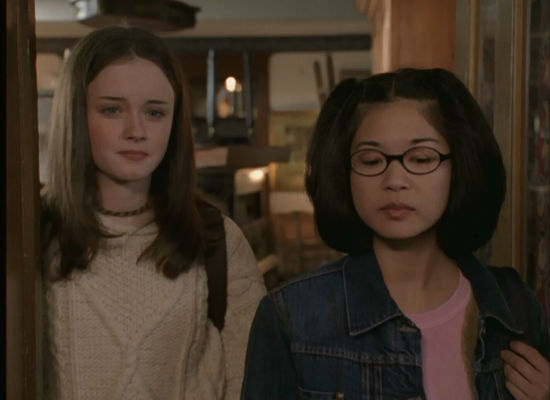
Premiering on 5 October 2000, Gilmore Girls was one of those rare shows that many people, myself included, loved right from the start.
Crafted with a very strong sense of time and place, and an exquisitely good eye for characterisation, by Amy Sherman-Palladino, Gilmore Girls was inspired by a 1999 visit its creator made to Washington, Connecticut which, according to an article in the Deseret News, made quite an impression:
“If I can make people feel this much of what I felt walking around this fairy town, I thought that would be wonderful. […] At the time I was there, it was beautiful, it was magical, and it was feeling of warmth and small-town camaraderie. … There was a longing for that in my own life, and I thought—that’s something that I would really love to put out there.”
By all accounts, the script for the pilot followed soon after, and from almost the first scene where a pleading Lorelai Gilmore (Lauren Graham) begs crotchety but good-hearted cafe owner Luke Danes (Scott Patterson) for more coffee, waaaay more coffee in fact, you get a sense of hos profound the impact of that one visit was on the show.
So perfectly-realised is Stars Hollow, the setting for the Gilmore Girls, that you get the reassuring feeling that you have walked straight into a lovely community where everybody knows your name, and where you’re not so much a faceless number as an actual person.
Of course, all that smalltown knowingness can generate a suffocating sense that everybody knows your business but you never get even a small sense of that at any point in the show, which steadfastly retains the sense that this is an idyll populated by quirky characters who, failing aside (thankfully no one is perfect) genuinely care for each other.
It’s that feeling of all-encompassing belonging that lends Gilmore Girls much of its appeal, amplified all the more by the close bonds between Lorelai and her 16 year old daughter Rory – short for Lorelai; the sameness of their first names is explained humorously by Rory as the result of her mum getting too much Demerol during the birth – who, arguments aside, have the kind of closeness that most mothers and daughters would kill for.
This tightknit relationship doesn’t exist in an un-self aware vacuum however.
When Rory is accepted into elite private school Chilton, the result of much lobbying by Lorelai who offhandledly quips in a way that soon becomes her trademark, that she offered to sleep with the principal, Lorelai jokes that her daughter will finally be in the position to do all the things that an early pregnancy took from her and that they will then have the sort of standard angst-ridden mother-daughter relationship that people expect.

That exchange between Lorelai and best friend and cook at the Independence Inn where they both work with an eye to opening their own establishment one day, Sookie (Melissa McCarthy in fine, klutzy form) is emblematic of the types of quickwitted, word-dense conversations that would come to characterise the series.
A jocular, pop culture-referencing spiritual sibling of The West Wing, also well-loved for its fast-moving, dense exchanges, Gilmore Girls managed to make almost every conversation witty, clever and heartfelt when needed, anchored by the sense that while these people sounded way more articulate than you and I, that they were just like us.
Lorelai and Rory particularly almost seemed to be in a oneliner arms race to come up with the wittiest rejoinder, most wry quip and humorous observation, with a hefty serving of self-depreciation and a rampant amount of pop culture allusions thrown into the fast-paced mix.
In the pilot alone, there are references to Britney Spears, Macy Gray, RuPaul, Huckleberry Finn – books feature prominently thanks to Rory’s innate bookishness – Zsa Zsa Gabor, Rosemary’s Baby and The Little Match Girl among many others.
Their shared love of pop culture is one of the things that unites mother and daughter, but it’s made clear early in the pilot that this warm-and-fuzzy vibe could be easily upset and that Rory could, when it came to it, be a brattish teenager (usually she was pretty mature and levelheaded), and that Lorelai for all her got-it-together, independent talk actually still had a chip on her shoulder about the way her life has gone.
That chip is not so much Lorelai’s creation – she is proud of her climb to general manager of the inn and her close, successful relationship with her daughter – as that of her fraught relationship with her well-off parents, especially archly-conservative mother Emily (Kelly Bishop).
It is to Emily and father Richard (Edward Herrmann) that Lorelai reluctantly turns when Chilton announces they need the considerable fees to be paid upfront or Rory will have to forfeit her place.
Apart from narratively providing a way to bring her parents, who think she has failed to live up to her potential despite doting on Rory, into the picture, the strained meeting gives us a look into the tensions between mother and daughter particularly – hence Lorelai’s earlier quip – and the way it has defined who Lorelai is and how she views the world and why her close, mostly-harmonious relationship with Rory is so important to her.

It is symbolic of the way in which the entire pilot seems to spring forth so perfectly-realised that you have to stop at several points during the episode to remember this is the first time you’ve been to Stars Hollow, met these engaging characters, including first boyfriend Dean (Jared Padalecki) and dance doyen Miss Patty (Liz Torres), and gloried in the picture-perfect world that Sherman-Palladino and her talented cast seem to create so effortlessly.
Gilmore Girls really has no stumbles in this first episode.
Very quickly we come to understand how close Rory and Lorelai are and why, how closeknit the entire town is and how quirky its residents are, and what it is that drives the lives of a mother and daughter team that it’s impossible to not immediately warm too.
It speaks volumes of how much of an impression that visit to Washington, Connecticut must have made on its creator that her vision could be so complete, so real and so tangible in a pilot, where most shows are struggling to cram in all the necessary pieces.
Much like the characters themselves, there’s almost nothing not to like about Gilmore Girls which deftly and artfully combines drama, humour, goofiness, wit and deep intelligence into a show that speaks to the human condition without becoming morosely mired in it.
Won over from the start? You bet we were. And frankly if we could have all moved there right from the word go – that’s an awful lot of devoted fans converging en masse! – I’m fairly certain that Stars Hollow would have ended up as some kind of quirky megacity.
Which when you think about it, would have kind of missed the point of Sherman-Palladino’s entire heartwarming vision of life in small town America.